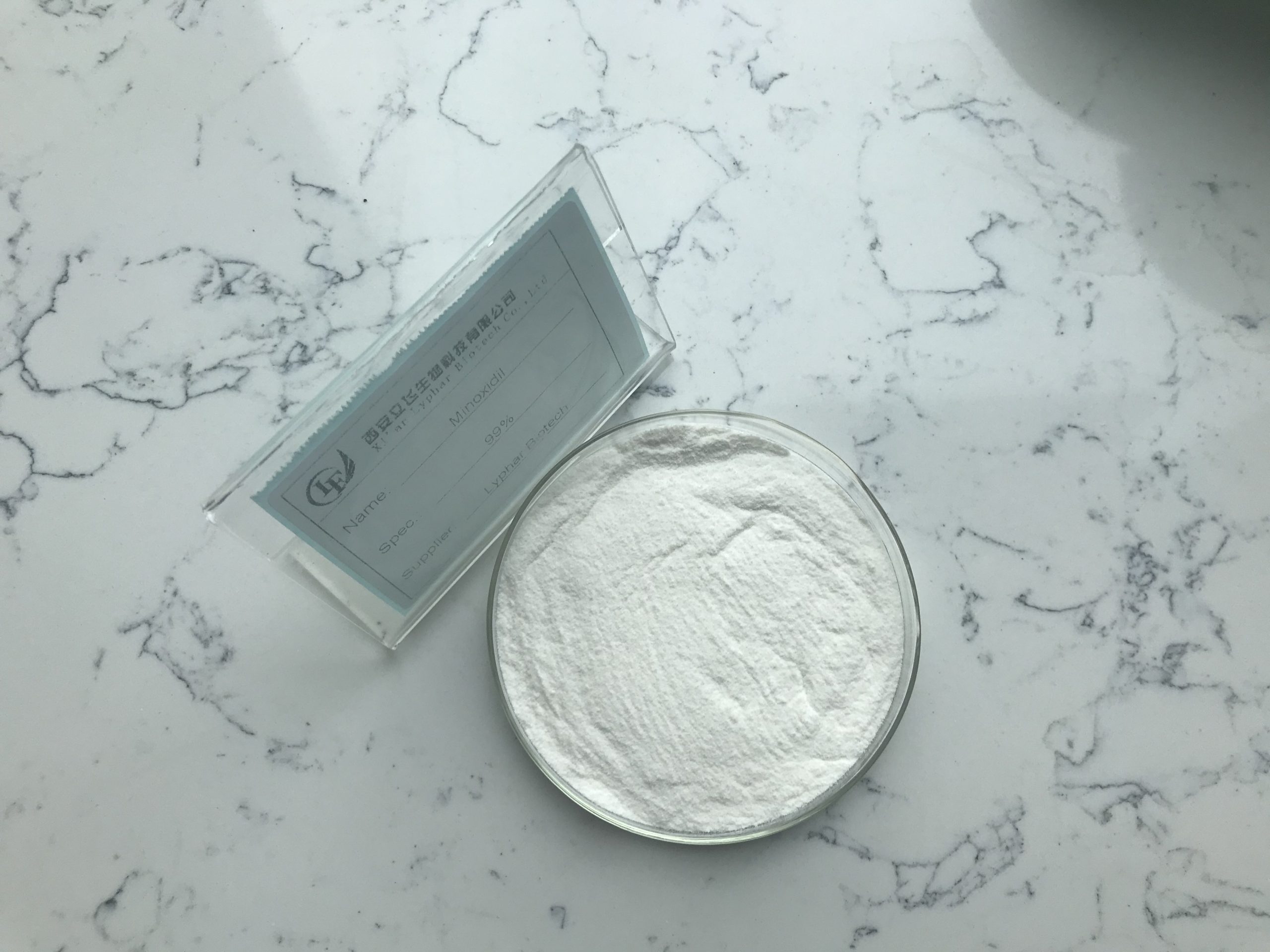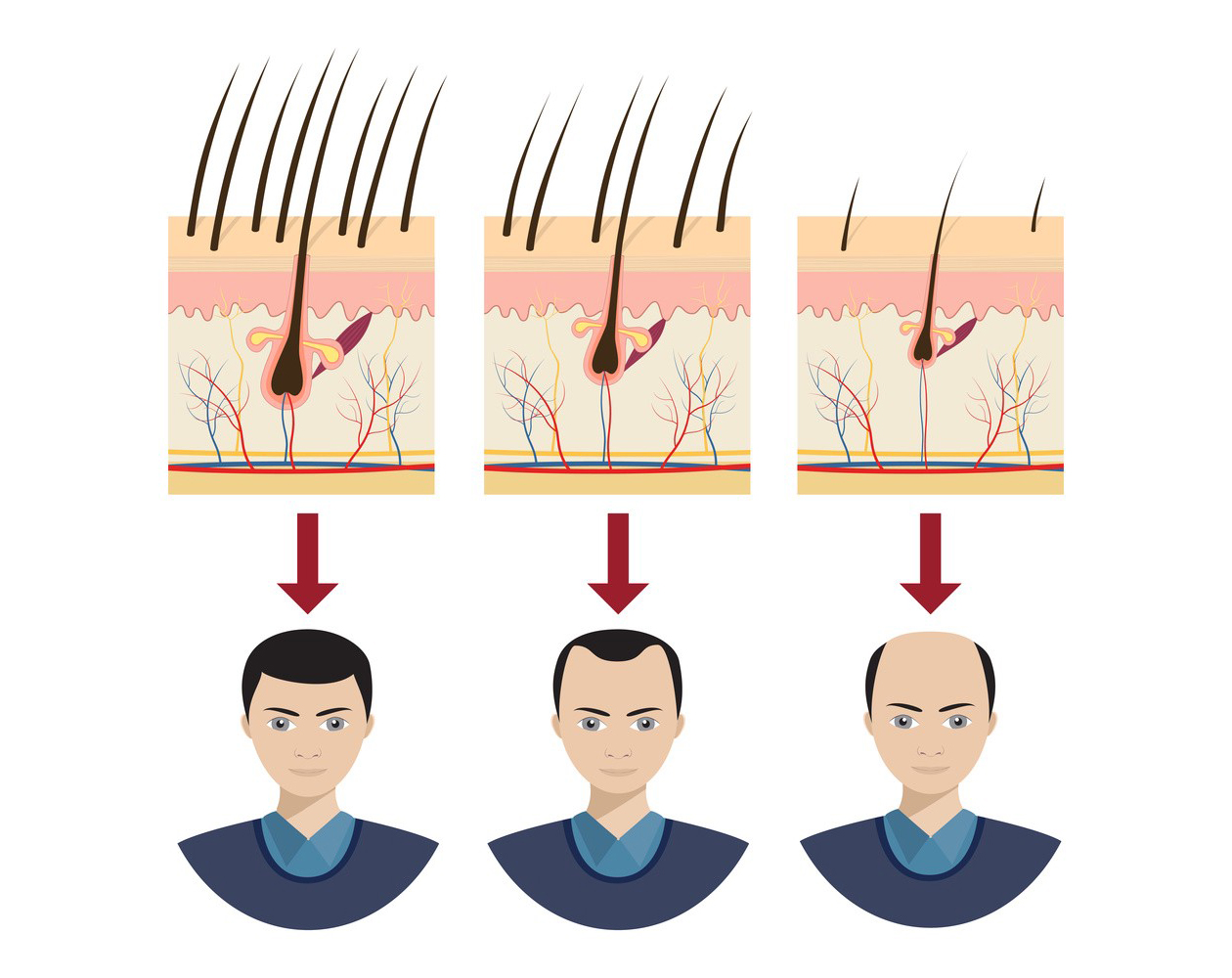Minoxidil is a medication primarily used for two main purposes: treating hair loss and lowering blood pressure.
Applications of Minoxidil
1.Hair Loss Treatment:
- Androgenetic Alopecia (Male and Female Pattern Baldness): Minoxidil is commonly used to treat androgenetic alopecia, which is a hereditary condition that causes hair loss in both men and women. It’s available as a topical solution or foam that is applied directly to the scalp.
- Alopecia Areata: Minoxidil may also be used to treat alopecia areata, an autoimmune condition that causes hair loss in patches on the scalp and other areas of the body.
How it works: The exact mechanism of how minoxidil promotes hair growth is not fully understood. It is believed to improve blood flow to hair follicles, which can stimulate hair growth in some individuals. It may also prolong the anagen (growth) phase of hair follicles.
Usage: Minoxidil is typically applied topically to the affected areas of the scalp once or twice daily. Results vary from person to person, and continuous use is usually required to maintain the benefits.

2.Blood Pressure Management:
- Minoxidil was initially developed as an oral medication to treat high blood pressure (hypertension). It works by dilating blood vessels, reducing peripheral resistance, and thus lowering blood pressure. However, its use for this purpose has become less common due to the development of newer and safer antihypertensive medications.
Usage: If prescribed for hypertension, minoxidil is usually taken orally as a tablet. It’s essential to follow the dosing instructions and monitor blood pressure regularly under the guidance of a healthcare provider.
3.Other Uses:
- Minoxidil has been explored for other purposes, such as promoting facial hair growth in some individuals and treating various forms of hair loss, including alopecia totalis and alopecia universalis. However, its effectiveness for these applications varies, and more research is needed.
It’s important to note that minoxidil is not a permanent solution for hair loss, and its effectiveness can vary from person to person. If you’re considering using minoxidil for hair loss or any other medical condition, it’s crucial to consult with a healthcare professional for proper guidance, dosage recommendations, and potential side effects. Additionally, it’s essential to use minoxidil consistently as directed to see and maintain results.
Adverse Effects of Minoxidil
Minoxidil is a medication primarily used to treat hair loss, particularly male and female pattern baldness (androgenetic alopecia). While it can be effective in promoting hair growth, it may also have several adverse effects and precautions to consider. It’s important to note that not everyone will experience these side effects, and they can vary in severity.
Common adverse effects of topical minoxidil (applied to the scalp) include:
1.Scalp Irritation: Some users may experience itching, redness, or irritation at the application site. This is more common with the liquid solution than foam.
2.Dryness and Flaking: Dryness of the scalp and flaking skin can occur as a result of using minoxidil.
3.Increased Hair Shedding: It’s not uncommon for individuals to experience increased hair shedding in the first few weeks of using minoxidil. This is often a temporary effect, and it’s known as “shedding phase.” It’s usually followed by regrowth of new, healthier hair.
4.Unwanted Hair Growth: Minoxidil can sometimes lead to the growth of fine, vellus hairs in areas where it wasn’t intended, such as the forehead or cheeks. This is more likely to occur in women.
5.Heartbeat Irregularities: In rare cases, minoxidil can be absorbed into the bloodstream and may cause changes in heart rate or rhythm. This is more likely when higher concentrations of minoxidil are used, and it’s more common with the oral form of the medication. Therefore, it’s important to follow the dosing instructions carefully.
6.Allergic Reactions: Some individuals may develop an allergic reaction to minoxidil, characterized by itching, swelling, rash, or hives. If this occurs, discontinue use and seek medical attention.
7.Dizziness and Lightheadedness: This is more common when using the oral form of minoxidil. It can cause low blood pressure and dizziness.
8.Increased Facial Hair (Hypertrichosis): Topical minoxidil may lead to increased facial hair in some individuals, especially in women. This effect is generally reversible if the medication is discontinued.

9.Eye Irritation: If minoxidil comes into contact with the eyes, it can cause irritation. Rinse the eyes thoroughly with water if this happens.
10.Interaction with Other Medications: Minoxidil can interact with other medications, particularly blood pressure medications, and affect their efficacy. Consult with a healthcare provider if you are taking other medications.
It’s essential to use minoxidil as directed by a healthcare professional and to follow the product’s instructions carefully. If you experience any severe or concerning side effects, consult your healthcare provider promptly. Minoxidil should not be used by individuals with certain medical conditions or a history of heart disease without medical supervision. Always consult with a healthcare professional before starting any new medication or treatment for hair loss.
